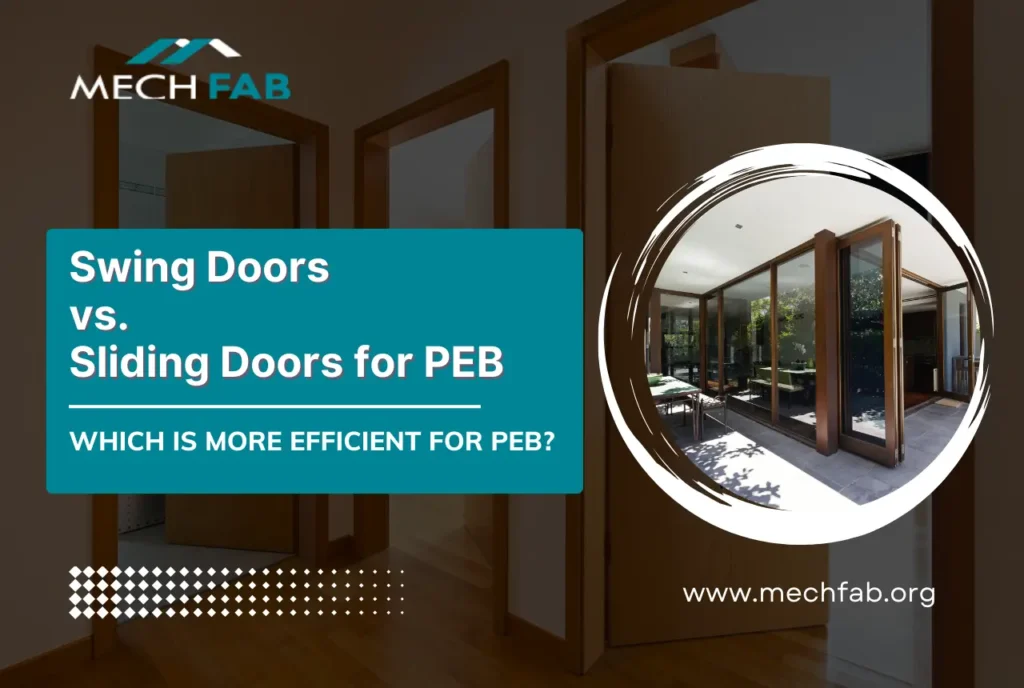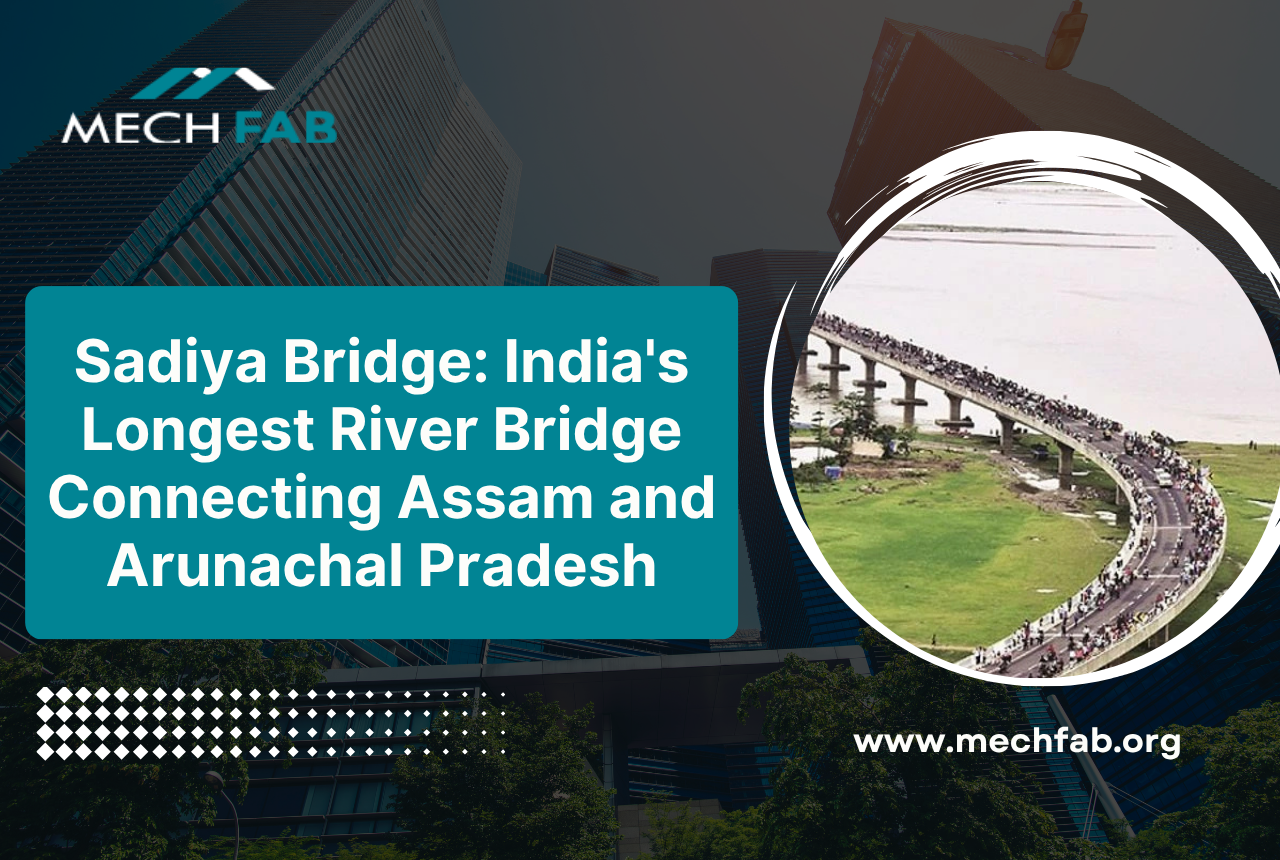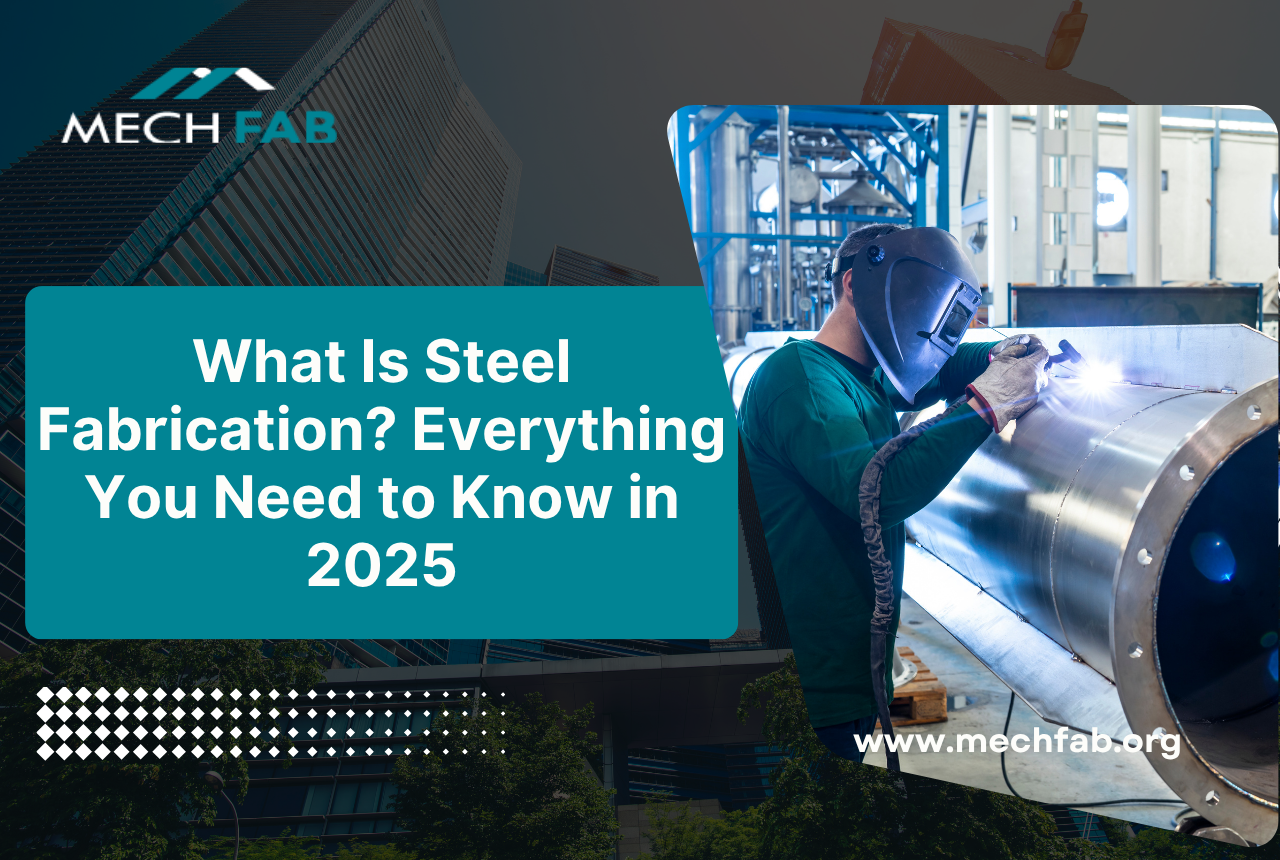Swing doors vs. Sliding doors for PEB is an important decision engineers face while constructing PEBs. PEBs or Pre-Engineered Buildings are popular for building warehouses, factories, and other mass commercial structures as they are easy, fast to construct, and cost-effective.
PEBs must select the right door as it plays a very important and crucial role in multiple factors like security, energy efficiency, and most importantly overall functionality. Two main options can be chosen from: swing doors & sliding doors. Each plays an important role and offers its very own set of pros and cons, which depend upon the engineers that they choose the best option that could specifically give a PEB the advantage depending on several key considerations.
This guide will equip you with information by exploring the advantages & disadvantages of both swing doors and sliding doors that are installed and used for PEBs. Here we’ll dive and also delve into the different key factors one should consider when deciding which one to choose, it will ensure that the PEB is equipped with the most efficient and suitable door system.
Swing Doors vs. Sliding Doors for PEB: Main Differences
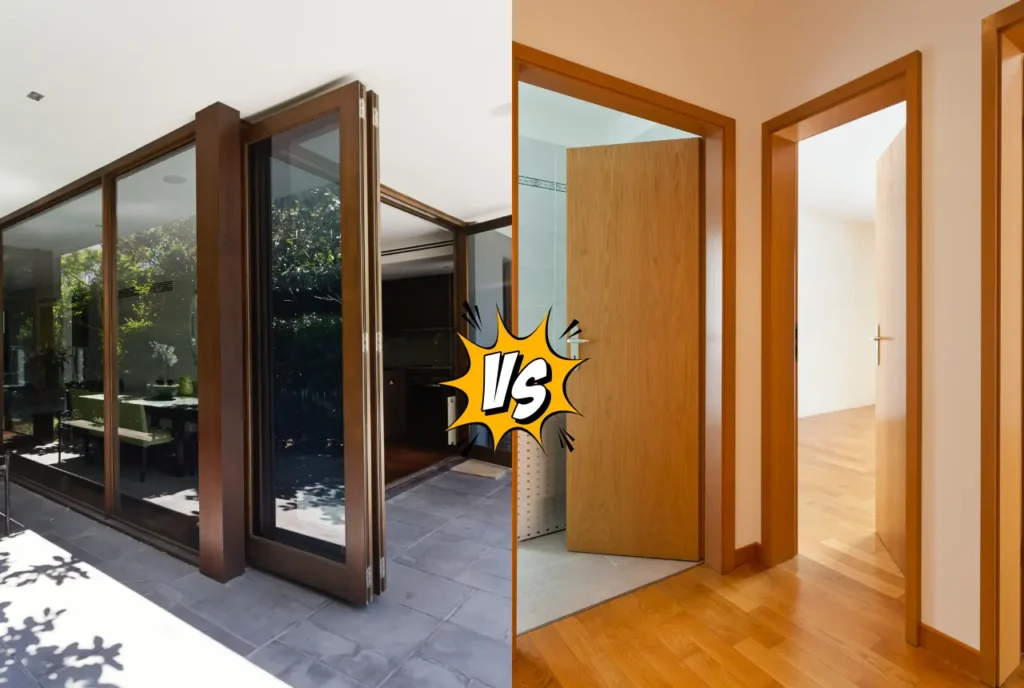
Space Utilization
As they are engineered swing doors need a proper clear opening arc that would give them the space to function properly. For a swing door to be built there is a requirement for extra space in the front area of the door installed so that the swing could be accommodated. One of the cons of this is that in a tight PEB layout, allowing the space can eat into valuable floor space that can be used for other purposes.
Whereas, sliding doors have the greatest advantage of being installed in a PEB structure, as it is operated with a gliding technique built parallel to the wall. This immediately eliminates the necessity for clearance in front of the doorway, which maximizes the area of usable space within the constructed PEB.
Operation and Ease of Use
When it comes to operating, swing doors are known for their simplicity. It just requires a minimal push or pull to operate, this makes them user-friendly for everyone that’ll use it.
But, as the blog has discussed before swing doors do cause an issue as they take up space for them to work properly. This is where the challenge gets associated with a swing door as operating one in an area with limited clearance is hard.
In contrast, sliding doors offer a very smooth and easy-to-open experience. They easily glide along a parallel track installed on the ground, which makes it soft and effortless to open or close.
But when it comes to larger frame doors it might take a bit more initial force to slide it, compared to swing doors.
Security Considerations
As swing doors are designed with hinges, they mostly tend to offer a robust feel in their movement. But this feature also makes them a strong barrier which is also versatile and can be further reinforced with different security features like deadbolts and heavy-duty hinges helping them be more secure & powerful.
But when we look at sliding doors their installation makes them more susceptible & resistant to forced entry as they are made on reliant tracks and rollers. Yet we know proper engineering is necessary when installing these components as they may be vulnerable if they are not properly constructed.
Sliding doors can still be secure with the use of laminated glass panels to resist shattering and robust locking mechanisms designed for sliding door systems.
Energy Efficiency and Insulation
Swings doors are conveniently energy-efficient if they are installed properly and sealed when constructed, this in conclusion can create a tight closure against the doorway where it is installed. All of these construction efforts can be massively beneficial to maintain consistent temperatures within the built PEB structure, which could help reduce energy costs for effective heating & cooling during the season changes.
In comparison to a tight insulated cover for the PEB structures provided by swing doors, sliding doors as they are designed, do and may have small air gaps along the installed bottom track. These gaps have the potential to impact the total insulation effectiveness (irrespective of how minimal they are) as we
Insulated panels can be installed on both sliding and swing doors to enhance their thermal efficiency. These panels are constructed with insulating materials, such as foam centers, to reduce heat transfer and enhance energy efficiency.
Maintenance and Repair
After years of construction, multiple things do need regular or annual maintenance & repair and these two types of doors do not fall short of that. Swing doors typically need minimal maintenance, that primarily focuses on keeping the lubrication of hinges going so that they can operate smoothly.
Now when coming to sliding doors require an extensive methodology of frequent maintenance, that includes multiple phases starting from cleaning the tracks so that debris can be removed and secondarily it could be the potential adjustment of rollers or other different types of components that could ensure the smooth operation of the door overall.
PEB Door Options: Considering Swing Doors
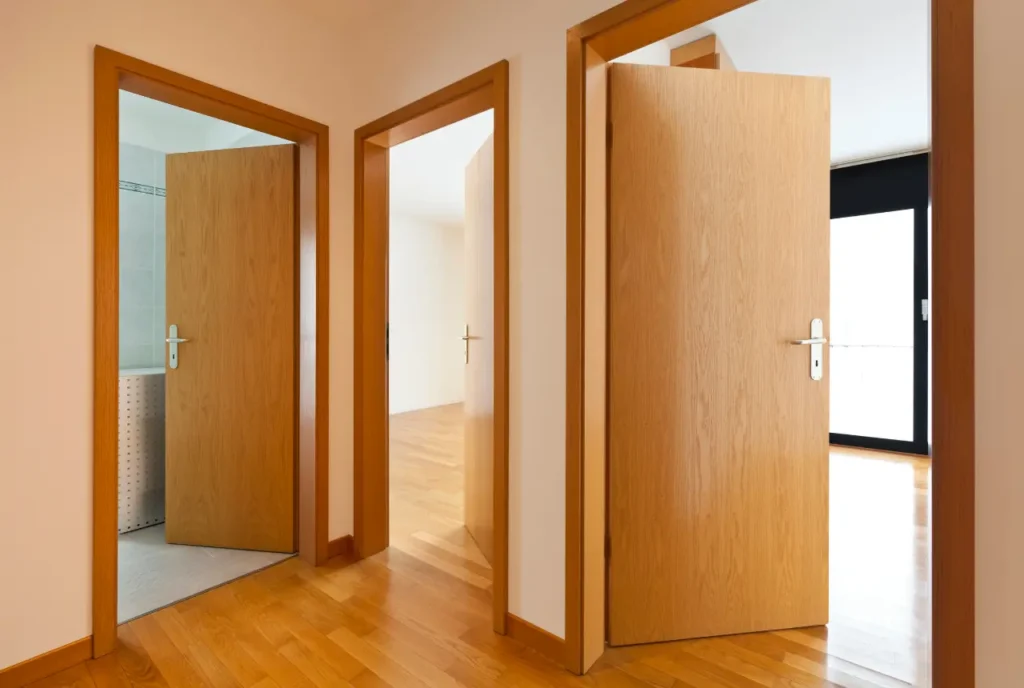
Swing doors offer a classic and reliable entry solution for PEBs. They come in a variety of materials and configurations to suit different needs.
Types of Swing Doors for PEBs:
Material
Steel: Due to its high-end build quality, steel has become a popular choice for PEB construction, providing strength, durability, and affordability. It is seen that installing swing doors can give you an advantage and is ideal for high-traffic areas or for applications that require a high level of security.
Fiberglass: It is an innovation of the future in the present times, built for good weather resistance, and corrosion protection, and has a lighter weight when compared to materials steel. It is a good option to use fiberglass swing doors for exterior applications or areas where weight is a concern.
Insulated: An insulating core material is inserted between two exterior panels in these doors. This structure contributes to preserving consistent temperatures within your PEB and enhances energy efficiency.
Door Configuration
Single Swing: The most common type, offering a simple and space-saving design.
Double Swing: Provides wider openings for larger equipment or forklift passage. Consider the additional space required for both door’s leaves to swing freely.
Automatic Swing Doors: Provide hands-free operation, thereby enhancing traffic flow and accessibility. They are optimal for applications that necessitate frequent entry and exit and high-traffic areas. Nevertheless, automatic doors are generally more expensive to install and necessitate more frequent maintenance than manual swing doors.
Factors to Consider When Choosing Swing Doors for PEB:
- Traffic Flow and Frequency of Use: High-traffic areas might benefit from wider double swing doors or automatic swing doors for improved efficiency.
- Security Needs: Steel swing doors with deadbolts and reinforced hinges offer superior security compared to fiberglass options.
- Available Space for Door Swing: Ensure there’s ample clearance in front of the door to allow for its full swing without obstructing movement or workflow.
- Energy Efficiency Requirements: Insulated swing doors can significantly improve thermal performance and reduce energy costs, especially for climate-controlled PEBs.
- Budgetary Limitations: Steel swing doors are generally the most cost-effective option, while automatic and insulated doors typically have a higher initial cost.
PEB Door Options: Considering Sliding Doors
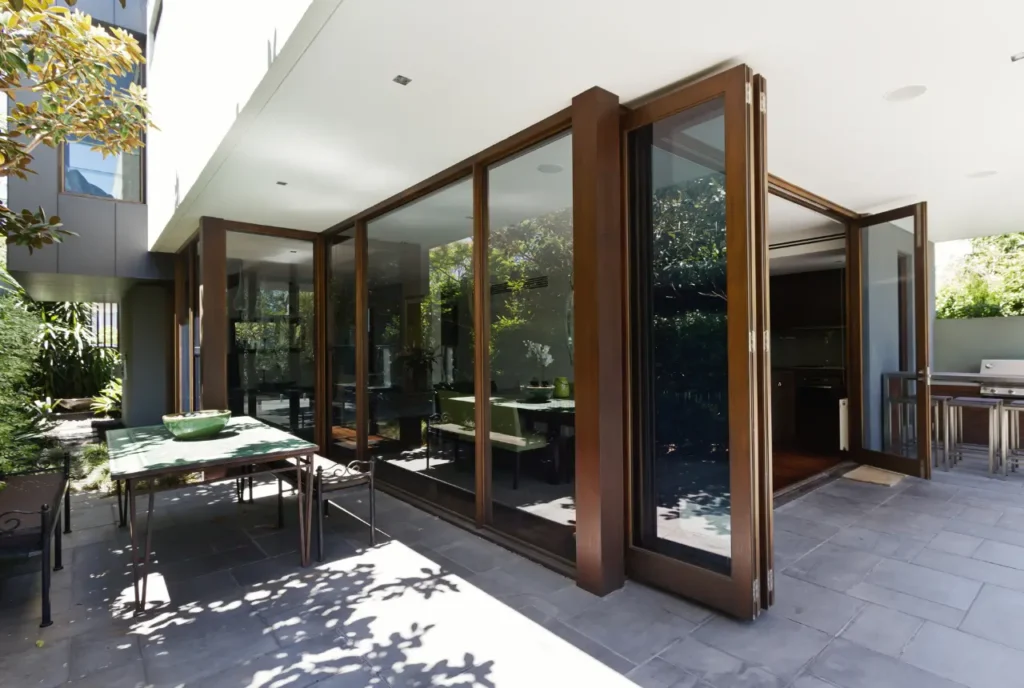
Sliding doors offer a space-saving and modern entry solution for PEBs. They come in various materials and configurations to suit different needs.
Types of Sliding Doors for PEBs
Material
Steel: A popular choice for its strength, durability, and affordability. Ideal for high-traffic areas or applications requiring a high level of security.
Aluminum: Offers a lighter weight option compared to steel, with good corrosion resistance. Aluminum sliding doors can be a good choice for larger doors or when weight is a concern.
Glass: Provides excellent natural light penetration and a visually appealing entryway. Consider tempered or laminated glass options for safety and security.
- Bypassing: Features multiple door panels that slide past each other on a single track. This option allows for a wider opening but requires more wall space on one side of the doorway.
- Bi-parting: Utilizes two door panels that slide in opposite directions, each needing its track. Offers a more centered opening but requires wall space on both sides of the doorway.
Sliding Door Track for PEB
The track system is a crucial component of sliding doors. Two main track options are available for PEBs:
- Surface Mounted: Tracks are mounted directly onto the floor and wall surface. This is a simpler and more cost-effective option. However, it can create a tripping hazard and may be more susceptible to debris accumulation on the track.
- Recessed: Tracks are embedded into the floor and wall, creating a flush finish. This offers a more aesthetically pleasing look and eliminates tripping hazards. Recessed tracks may require more complex installation and might be slightly more expensive.
Considerations When Choosing Sliding Doors for PEBs
- Available Wall Space: Bypassing doors require space on one side for all panels to stack, while bi-parting doors need space on both sides.
- Weight Limitations: The track system needs to be able to support the weight of the chosen door material and its size.
- Security Needs: Steel sliding doors offer better security compared to glass options. Additional security features like laminated glass and heavy-duty locking mechanisms can be incorporated.
- Desired Level of Natural Light: Glass sliding doors allow for maximum natural light penetration, potentially reducing lighting energy costs.
- Budgetary Limitations: Steel sliding doors are generally the most affordable option, while aluminum and fire-rated doors typically have a higher cost. Glass doors can further increase the cost depending on the size and type of glass used
Cost Comparison: Swing vs. Sliding Doors for PEB
In general, swing doors offer a more budget-friendly upfront cost compared to sliding doors.
For swing doors, the main cost factors include:
- Material: Steel doors are the most affordable, while fiberglass and insulated options are slightly more expensive.
- Size: Larger swing doors naturally cost more due to increased material usage.
- Automatic Features: Automatic swing doors have a significantly higher initial cost compared to manual swing doors.
Sliding doors tend to have a higher initial cost than swing doors. This can be attributed to the more complex track system and hardware required for their operation. Additionally, features like:
- Material: Aluminum sliding doors generally cost more than steel, while extensive use of glass can significantly increase the price.
- Configuration: Bi-parting doors often require more complex track systems compared to bypassing doors, leading to a higher cost.
- Fire Rating: Fire-rated sliding doors incorporate special materials and construction methods, making them the most expensive option among sliding doors.
It is also important to take into account the costs of long-term maintenance. In general, swing doors necessitate minimal maintenance, with an emphasis on hinge lubrication. This may necessitate more frequent track cleansing and potential adjustments to rollers or other components for sliding doors. Nevertheless, the overall maintenance expenses for both door varieties are typically negligible.
Conclusion
Selecting the appropriate door for your PEB hinges requires a thorough examination of your unique requirements. There are distinct advantages and disadvantages to both swing and sliding doors.
Upfront, swing doors are generally more cost-effective, offer exceptional security, and provide a secure seal to enhance energy efficiency. Nevertheless, they necessitate clearance space for their swing and may not be the most effective option for maximizing the utilized floor area.
Sliding doors are exceptional at optimizing space, as they eliminate the necessity for clearance in front of the doorway and enable broader openings. They can also be visually enticing by incorporating large glass panels that allow natural light to enter. Nevertheless, sliding doors may require more frequent maintenance due to their track system’s susceptibility to dust and detritus accumulation, as well as their slightly higher initial costs. Furthermore, certain sliding door designs may raise security concerns.

